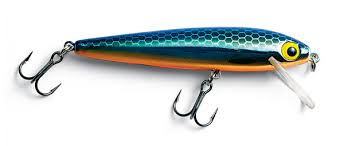Fishing lures have ancient history, modern appeal
Published 1:46 pm Wednesday, July 26, 2023
By James L. Cummins
In today’s highly marketed and equipment-intensive sport of hunting and fishing, we seldom think about hooks made of bone or flint, or even shells or horns.
We seldom think about fishing lines made of vines, or even silk or horsehair or cotton. Rods? They were human arms. Rods eventually evolved into cane poles. The ancient Egyptians had a reel of sorts.
This is a long way from the science behind a rod at Walmart® or a new spinning reel from Bass Pro. It’s also a long way from the science behind designing a lure to “swim” naturally in the water.
Fishing lures have become quite a collectible item. With the many different sizes, shapes, and colors of fishing lures, it’s easily seen why so many people are truly “hooked.” I think most lures are designed as much to catch anglers as they are to catch fish – me included!
Fishing is one of the oldest sports on earth. Hand-made lures were made from flint, bone, or the beaks and claws of birds of prey. They have been used as early as the Stone Age. Apart from a few bronze hooks from around 150 A.D., it is only recently that the fishing industry has evolved to use wood, metal, and plastic.
So, who do we thank for making lures? We will probably never know. Theocritus, a Greek poet, mentions artificial fishing lures in the third century B.C. When the British explorer Captain James Cook visited the Hawaiian Islands in the 1700s, he reported the natives using spoon-like lures made of bone–though they were probably not red and white.
One of the most famous of the early lures is Heddon’s wooden plug. So, the story goes, James Heddon was sitting on the bank of a pond whittling a piece of wood when a smaller piece of wood fell into the water and was violently attacked by a bass. He then added a hook and started manufacturing it as a commercial “plug,” named so because they were so deadly.
In the production of lures, there were three basic booms. The first began with Julio T. Buel with the metal minnow in the mid-1800s. The second wave began around the turn of the century when the companies in Plug Alley began producing wooden lures. Finally, the third wave took place after World War II when our troops returned home and found a shortage of jobs.
The National Fishing Lure Collectors Club was founded in 1976 to foster lure collecting as a hobby and to assist its members in locating, identifying, and trading collectable fishing lures.
Membership benefits include a subscription to four issues of the National Fishing Lure Collector’s Club Gazette. Articles on tackle, want and sale advertisements from fellow members, a calendar of events and upcoming shows, and special feature stories are part of each issue.
For membership information, including dues, you can visit nflcc.org.
James L. Cummins is executive director of Wildlife Mississippi, a non‑profit, conservation organization founded to conserve, restore, and enhance fish, wildlife, and plant resources throughout Mississippi. Their web site is www.wildlifemiss.org.






